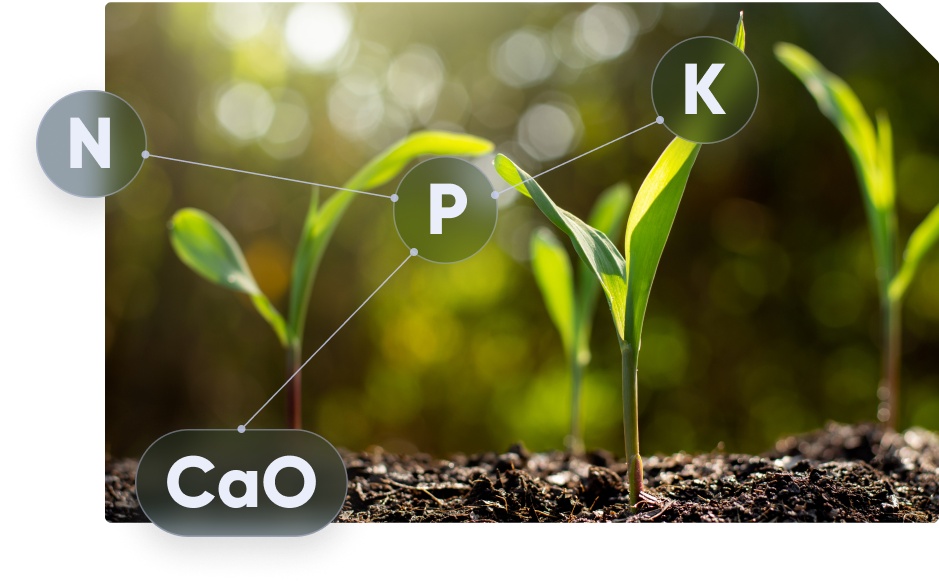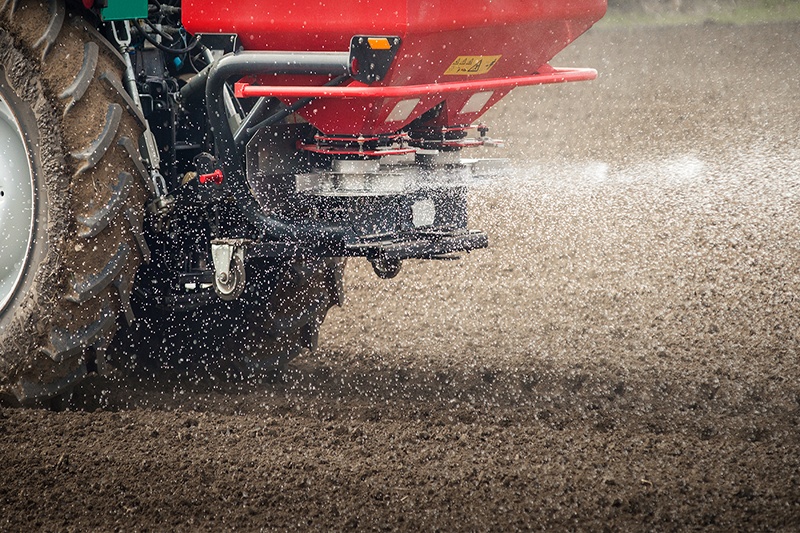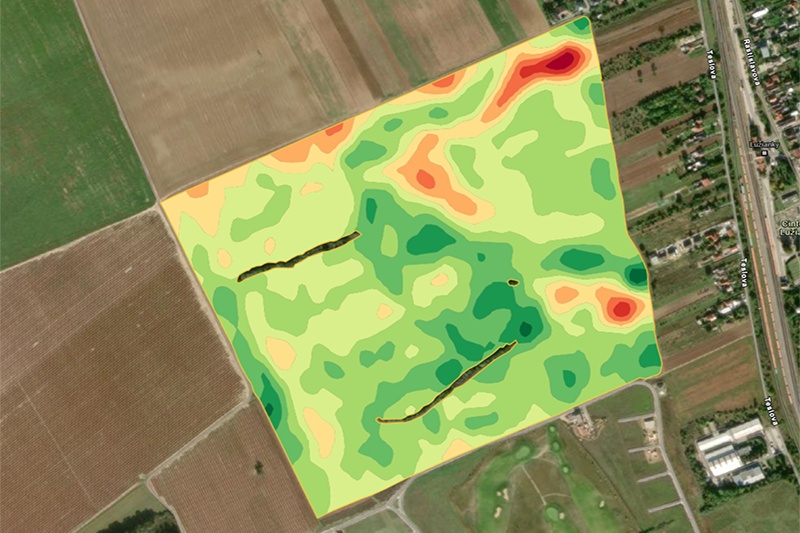Products
VRA Fertilizer Application
Increase yield and save costs by optimizing fertilizer distribution.
Variable Rate Fertilizer Application is a groundbreaking approach in precision agriculture, focusing on applying fertilizers in varying amounts across different field zones based on specific crop needs. This innovative method integrates advanced satellite data, detailed soil sampling, and yield potential analysis to optimize fertilizer use. VRA Fertilizer Application not only enhances crop health and yield but also ensures environmental sustainability by preventing over-fertilization and reducing nutrient runoff.

Create VRA prescription maps for zone-specific application of N, P, K and CaO
- Fields are divided into zones based on factors like historical crop performance, soil type, soil nutrient content, or topography.
- Satellite Data and Soil Samples are analyzed for nutrients, pH, organic matter, and other relevant properties.
- Results are then used to create a nutrient management plan tailored to each zone’s specific needs.

Variable rate application of nitrogen (N), phosphorus (P), and potassium (K) in agriculture is tailored to the specific nutrient needs of different field zones. This strategy is informed by soil nutrient analyses and yield potential maps. Applying N, P, and K variably ensures that each zone receives the exact nutrients it requires, maximizing crop growth and yield potential. This method enhances efficiency by reducing fertilizer waste and costs, and it minimizes environmental impact by preventing nutrient runoff. Overall, this targeted approach optimizes crop nutrition and aligns with sustainable farming practices.
Variable rate fertilizing of lime (CaO) based on soil pH levels across different zones directly addresses the unique needs of each field area by applying the exact amount of lime required by each zone. It effectively avoids over-liming areas with adequate pH and under-liming acidic zones, maintaining ideal soil conditions for crop growth. This precise application maximizes crop yields, improves soil health, and offers cost efficiency by reducing waste.

Yield Potential Maps
Multi-year productivity analysis
CultiWise utilizes yield potential mapping to identify areas within a field that have varying levels of productivity. By understanding these variations, farmers can apply fertilizers more effectively, concentrating on areas that promise higher yields. This not only boosts overall crop performance but also ensures the efficient use of resources.

Customized fertilization plan to get most of your yield variability.
Soil sampling based on productivity zones
Soil sampling based on productivity zones is a method that significantly increases the accuracy of identifying in-field differences while reducing the number of required samples. Unlike traditional grid-based sampling, this approach targets specific areas within a field, each characterized by different levels of crop performance. This targeted sampling not only captures the true variability in soil characteristics more effectively but also reduces the overall number of samples needed. Consequently, this leads to lower costs for soil analysis, as fewer samples mean reduced laboratory testing expenses. By accurately focusing on key areas, this method provides precise insights for fertilizer application and soil management, making it a cost-effective and efficient strategy for modern agriculture.
Ready to elevate your farming?
Reach out to us and explore the potential of CultiWise!

